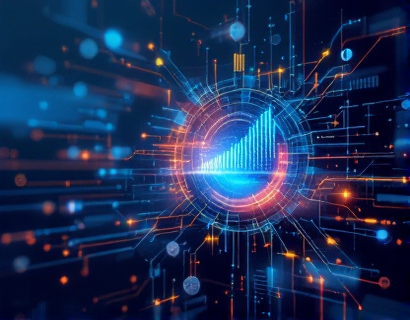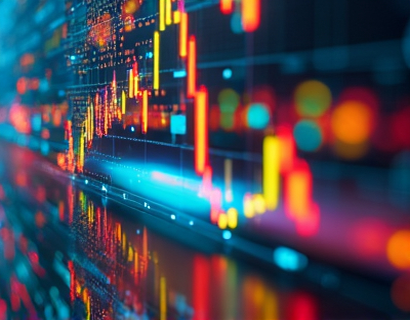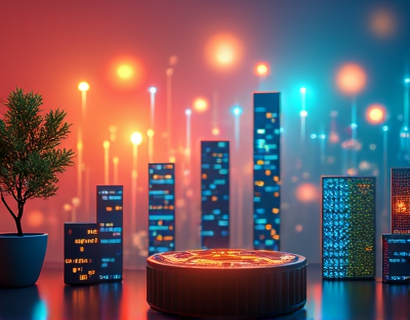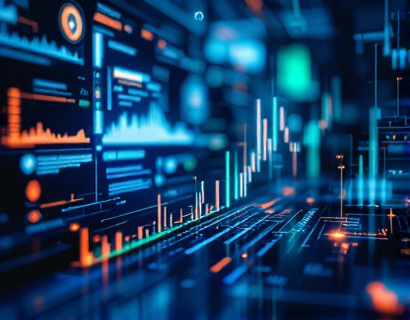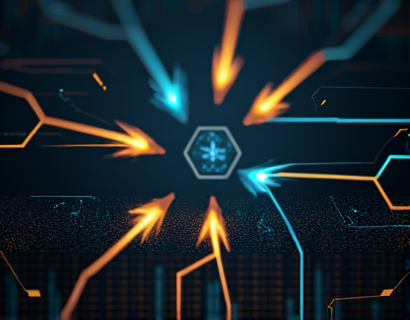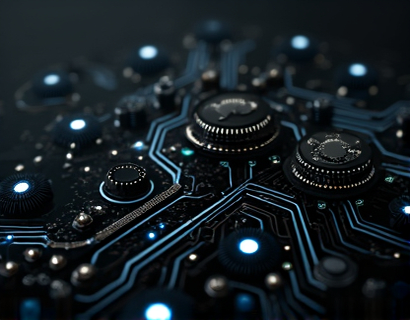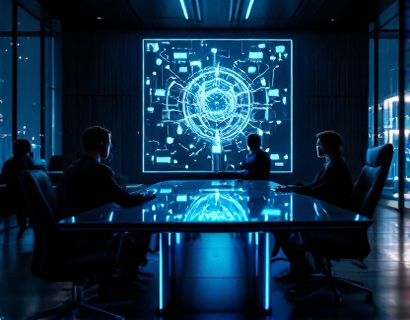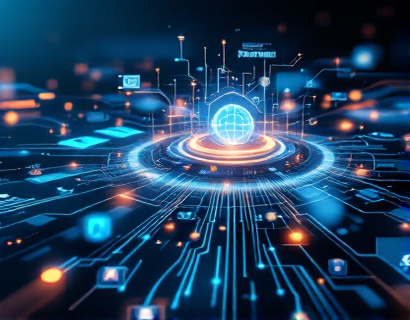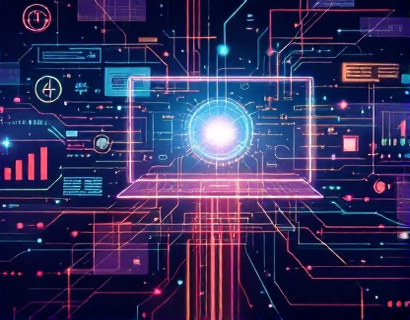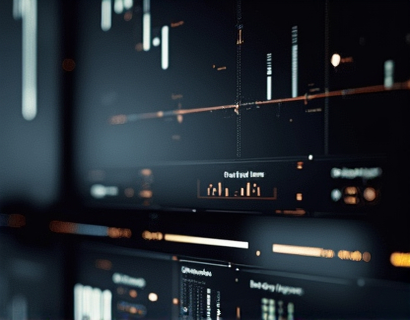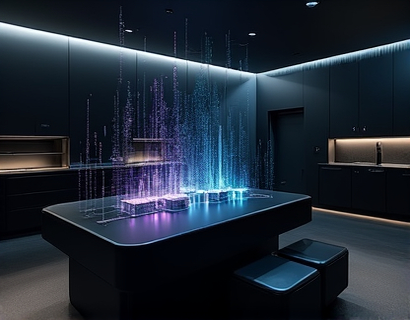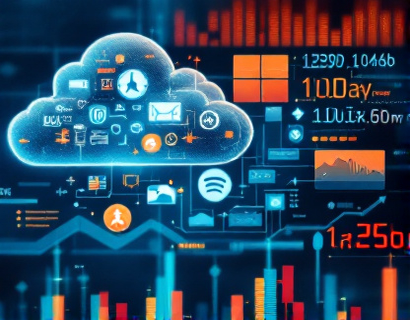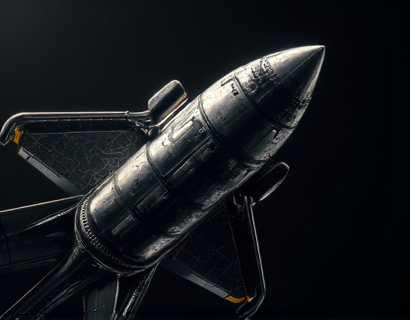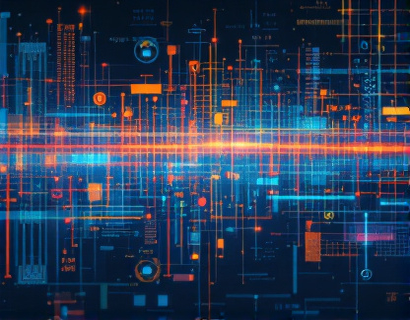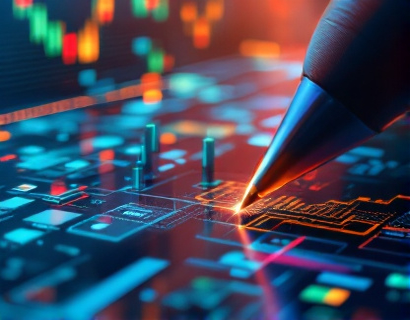Blockchain for Art: Revolutionizing the Preservation and Tracking of Historical Artifacts with Decentralized Solutions
The art world is on the cusp of a transformative era, driven by the integration of blockchain technology. This innovative approach promises to revolutionize the preservation and tracking of historical artifacts and artworks, ensuring their authenticity and provenance are verifiable and secure. By leveraging decentralized solutions, blockchain technology fosters trust and collaboration among collectors, museums, and cultural institutions, safeguarding our shared cultural heritage for future generations.
Blockchain, at its core, is a distributed ledger technology that records transactions across multiple computers in such a way that the registered transactions cannot be altered retroactively. This inherent characteristic makes it an ideal tool for the art world, where the authenticity and provenance of artworks are paramount. Traditional methods of verifying an artwork's history and ownership are often cumbersome, prone to fraud, and lack transparency. Blockchain offers a decentralized, immutable, and transparent alternative.
Verifying Authenticity and Provenance
The authenticity of an artwork is crucial for its value and legitimacy. Blockchain technology can provide an unforgeable record of an artwork's creation, ownership history, and any significant transactions. Each piece of art can be assigned a unique digital token on the blockchain, which contains metadata such as the artist's signature, creation date, materials used, and any relevant certificates of authenticity. This digital token serves as a tamper-proof certificate of authenticity.
Provenance, the history of ownership and transfer of an artwork, is equally important. Blockchain's transparent and immutable nature ensures that every transaction involving the artwork is recorded and verifiable. This transparency builds trust among buyers, sellers, and institutions, reducing the risk of fraud and disputes. For instance, a collector can trace the entire history of a painting, from the artist's studio to its current owner, with each step documented on the blockchain.
Enhancing Transparency and Trust
Transparency is a cornerstone of blockchain technology, and it brings significant benefits to the art market. By providing a clear and immutable record of an artwork's history, blockchain reduces the opacity that often characterizes art transactions. This increased transparency helps to deter fraudulent activities such as forgery and theft. Collectors and institutions can have greater confidence in the artworks they purchase, knowing that the provenance is verifiable and trustworthy.
Moreover, blockchain enhances trust among all stakeholders in the art ecosystem. Museums, galleries, and auction houses can collaborate more effectively, sharing verified information about artworks and their histories. This collaboration can lead to more informed decision-making and a more robust art market. For example, a museum can verify the authenticity of a loaned artwork by checking its blockchain record, ensuring that it is genuine and has a clean provenance.
Facilitating Provenance Research
Provenance research is a critical aspect of art conservation and authentication. Blockchain technology can streamline this process by providing a centralized yet decentralized repository of information. Researchers and experts can access a comprehensive and accurate history of an artwork, which can be invaluable for art historians and conservators. This access can lead to new insights and discoveries about artistic techniques, periods, and movements.
For instance, blockchain can help trace the journey of a manuscript from its creation in a medieval scriptorium to its current location in a major library. Each step in its journey, including any restorations or ownership changes, is recorded on the blockchain. This detailed history can aid in the conservation and restoration of the manuscript, ensuring its preservation for future generations.
Securing Ownership and Rights
Ownership and rights management are complex issues in the art world. Blockchain can simplify these processes by providing a secure and transparent way to record and transfer ownership. Smart contracts, self-executing contracts with the terms directly written into code, can automate the transfer of ownership and the execution of agreements. For example, a smart contract can ensure that a artwork is only transferred to a buyer once the payment is confirmed and verified.
This automation reduces the need for intermediaries, lowering transaction costs and speeding up the process. Additionally, blockchain can help manage copyright and licensing rights, ensuring that artists and rights holders are properly compensated for the use of their work. This is particularly important in the digital age, where artworks can be easily reproduced and distributed online.
Preserving Cultural Heritage
The preservation of cultural heritage is a global concern, and blockchain technology can play a significant role in this effort. By providing a secure and transparent record of artifacts, blockchain helps ensure that cultural treasures are not lost or misappropriated. This is especially crucial in regions where cultural heritage is at risk due to conflict, natural disasters, or inadequate preservation efforts.
Blockchain can facilitate the creation of a global registry of cultural artifacts, accessible to institutions and authorities worldwide. This registry can help track the location and condition of artifacts, enabling timely interventions to protect them. For example, during a natural disaster, authorities can quickly identify and prioritize the rescue of artifacts based on their blockchain records.
Collaboration and Standardization
For blockchain to fully realize its potential in the art world, collaboration and standardization among stakeholders are essential. Collectors, museums, auction houses, and technology providers must work together to develop common standards and protocols. This collaboration can lead to the creation of interoperable blockchain platforms that can be used across the industry, enhancing efficiency and interoperability.
Standardization is also crucial for ensuring that blockchain records are consistent and reliable. Industry-wide standards for metadata, tokenization, and smart contracts can help prevent fragmentation and ensure that all participants are on the same page. Organizations such as the International Organization for Standardization (ISO) and the World Intellectual Property Organization (WIPO) can play a key role in developing these standards.
Challenges and Considerations
While the potential benefits of blockchain in the art world are significant, there are also challenges and considerations that need to be addressed. One major challenge is the technical complexity of blockchain technology, which can be a barrier for some institutions and individuals. Education and training programs can help bridge this gap, making blockchain more accessible and user-friendly.
Another consideration is the scalability and environmental impact of blockchain networks. As the number of transactions increases, the computational resources required can become substantial, leading to concerns about energy consumption and carbon footprint. However, the development of more efficient consensus mechanisms and the adoption of environmentally friendly blockchain platforms can mitigate these issues.
Case Studies and Real-World Applications
Several initiatives and projects are already leveraging blockchain technology in the art world, demonstrating its practical applications. One notable example is the use of blockchain to authenticate and track digital art. Platforms like SuperRare and KnownOrigin use blockchain to issue unique digital tokens for each piece of digital art, ensuring their scarcity and authenticity.
In the physical art market, projects like Provenance.io and Artblock are exploring the use of blockchain to verify the provenance and ownership of traditional artworks. These platforms provide a secure and transparent way for collectors and institutions to manage and verify the history of their collections. Additionally, some museums are experimenting with blockchain to create digital twins of their artifacts, enhancing visitor engagement and providing detailed information about each piece.
Conclusion
The integration of blockchain technology in the art world represents a significant leap forward in the preservation and tracking of historical artifacts and artworks. By ensuring authenticity, provenance, and secure ownership, blockchain fosters trust and collaboration among collectors, museums, and cultural institutions. This innovative approach not only protects our cultural heritage but also makes it more accessible and transparent for future generations.
As the art world continues to embrace blockchain, we can expect to see more robust and efficient systems for managing and preserving cultural treasures. The potential for blockchain to revolutionize the art market is immense, and its adoption will undoubtedly lead to a more secure, transparent, and collaborative future for all stakeholders involved.



